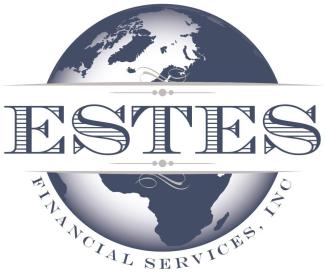
Term vs. Permanent Life Insurance: What You Need to Know
All of the various forms of life insurance – whole life, term life, variable life, universal life and the dozens of variations of each – can be distilled down to just two types: Term and Permanent. As their names would imply, term is life insurance that covers a certain term or number of years, and permanent is life insurance designed to remain in place as long as premiums are paid. Which type of coverage is right for you depends on several factors including how much coverage you need and how long your need will last.
If you’re only consideration is paying the lowest possible premium for maximum coverage, term is your best choice. However, if you think your need for life insurance will extend beyond 10, 20 or 30 years, the most cost effective way to own life insurance may be with a permanent, cash value policy. Here’s what you need to know as you consider your options.
Term Life
Because of its lower premium, term life insurance is a popular choice for people who believe it can provide the greatest capacity at the lowest overall cost. While that may be true if you knew when you were going to die, it doesn’t necessarily hold true if you die closer to the age that the insurance company expects you to die.
As the graphic illustrates, a level term policy can provide a level death benefit for a certain period of time – i.e., to age 65, 10 years, 15 years or 30 years – after which everything your premium stops and your death benefit stops. If, at the end of that period of time, you still have a need for life insurance protection, you would have to renew the coverage at a much higher rate, often prohibitively high; that is if you are still insurable.
The bottom line is that term life insurance is not designed to pay off. The life insurer knows that the likelihood of your dying before your life expectancy is very low. In fact, statistically, there is only a 1 percent likelihood that a death benefit is paid during the term. That is why life insurers can charge so little for term policies. You have much better odds of a payout at the black jack tables. In Las Vegas, the house is willing to give you a 49 percent chance of winning because it knows it will take in a 2 percent profit at the end of the day. Life insurers are willing to provide you with a million dollars of protection at a fraction of the cost because they know it will only payout 1 percent of the time.
Permanent Life Insurance
Permanent life insurance, also referred to as cash value life insurance, is designed to provide protection for your whole life. As long as the premium payments are made, it will continue to provide protection and it can never be cancelled. As the graphic illustrates, a typical whole life product starts out providing a level death benefit that, when a level premium is paid over time, will increase. This is due to the cash value element of whole life, which guarantees a minimum rate of growth on the portion of the premium that isn’t applied to the cost of insurance.
In this example, based on an actual life insurance illustration, the death benefit increases to $2 million as the cash value accumulation grows to nearly $1 million at age 65. Because there has to be a certain space between the cash value and the death benefit, the cash value growth automatically pushes the death benefit higher. In essence, the whole policy provides a continuous expansion of capacity both while you are alive (use of the cash value) until the time of your death.
To accomplish this, life insurers charge more for whole life coverage, primarily because, unlike term life which only pays out 1 percent of the time, whole life pays out 100 percent of the time. So, the difference in cost is significant. For a $ 1million term life policy a healthy 35 year old might pay around $700 a year. The same person would have to pay around $12,000 more for a permanent, whole life policy. This is where the “buy-term-and-invest-the difference” advocates come in.
Buy Term and Invest the Difference?
Why wouldn’t you take the extra $12,000 and invest it on your own? The theory being that, when your term policy expires, you would have accumulated enough capital to provide the capacity you and your family needs. In theory, that might be a reasonable plan. In practice, however, not only do you need to have the discipline to invest the difference as required, you would need to be able to achieve a level of return on your investment that may or may not be available in the markets. That means you have no guarantee whatsoever of accumulating the necessary capital.
As an accumulation vehicle, whole life insurance is truly unique because of the built-in guarantees and the special tax properties of cash value. And, when it is issued by a mutual life insurance company which pays an annual dividend to whole-life policyholders, it can achieve guaranteed cash value growth unsurpassed by any other type of fixed-yield vehicle. No other vehicle can promise a minimum rate of tax-free growth while allowing unrestricted access to funds on a tax-free basis. Because of this whole life insurance is considered to be the ultimate “crossover” asset that can serve both a protection strategy and a sufficiency strategy for lifetime income.
*This content is developed from sources believed to be providing accurate information. The information provided is not written or intended as tax or legal advice and may not be relied on for purposes of avoiding any Federal tax penalties. Individuals are encouraged to seek advice from their own tax or legal counsel. Individuals involved in the estate planning process should work with an estate planning team, including their own personal legal or tax counsel. Neither the information presented nor any opinion expressed constitutes a representation by us of a specific investment or the purchase or sale of any securities. Asset allocation and diversification do not ensure a profit or protect against loss in declining markets. This material was developed and produced by Advisor Websites to provide information on a topic that may be of interest. Copyright 2021 Advisor Websites.

